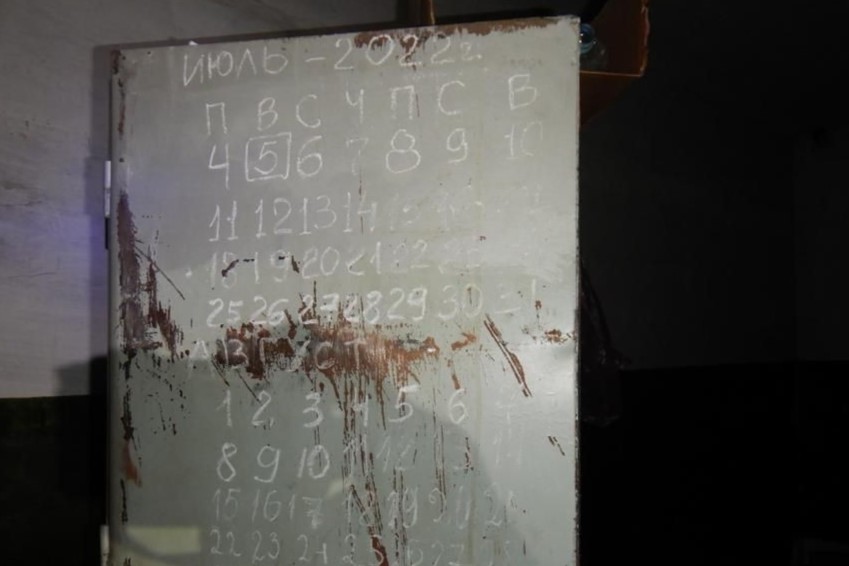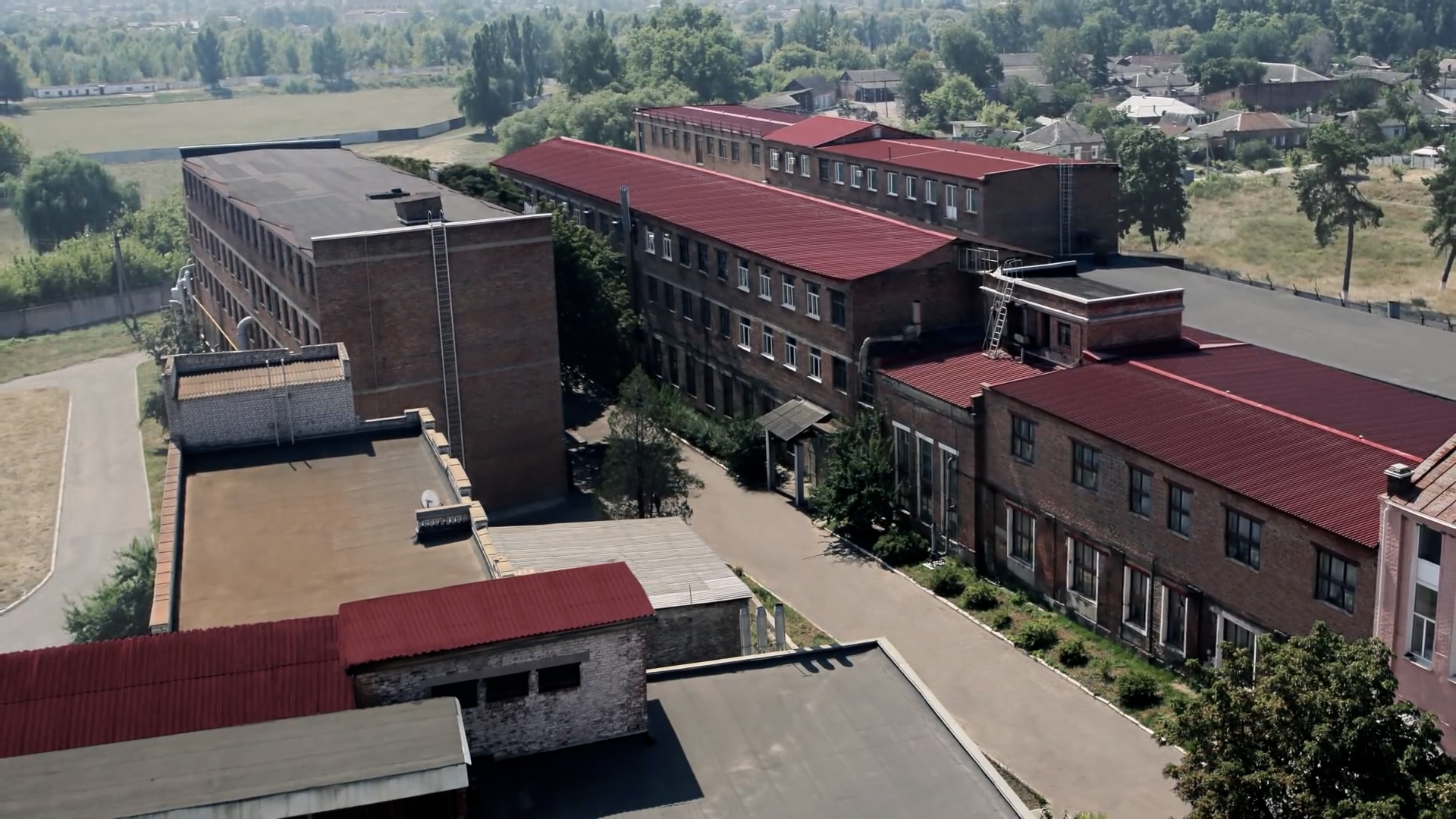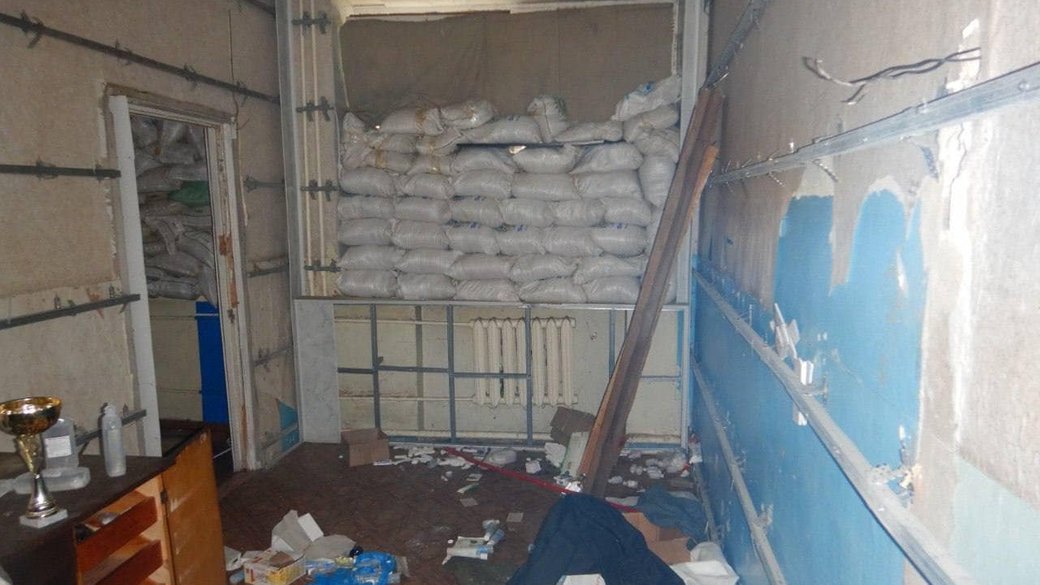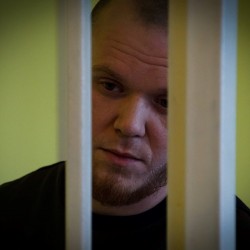
“Between 5 and 20 June 2022 during the occupation of the town of Vovchansk (Kharkiv Region [1]) the suspects together with other members of the Russian armed forces tortured civilians,” says the press service of the Procurator-General’s office. “They detained one victim in her home, and took her to the Vovchansk Engineering Works (VEW). Exploiting her vulnerability, they exerted psychological pressure on the detainee as she was taken to the factory: firearms were pointed at her, they threatened to kill her and fired into the air next to her head.”
Law-enforcement officers take up the story: “On the second floor of the torture centre the suspects threatened to shoot the woman and her family; they intimidated her with the threat of torture by electric current.
“Then one of the suspects struck the victim over the back of the head; she fell to the floor and lost consciousness.”
Judging by reports published on the website of the Ukrainian Procurator General about these suspicions and by the summonses, calling them in for cross-examination, the men in question are Anton Politov and Zakhar Zubkov.
Politov is a Russian citizen who works for the ministry of internal affairs of the Luhansk people’s republic”, where he heads the “anti-drugs trade” department.
Zubkov is a Ukrainian citizen, a gunman of the “Luhansk people’s republic”, who was acting as a guard of those unlawfully detained at the Engineering Works in Vovchansk.
Ukraine’s law-enforcement agencies announced their suspicions about Politov last summer. Then they were particularly concerned about an incident on the evening of 5 June 2022.
Two white motor vehicles without number plates, and with the letter Z on the bonnet, drew up outside the home of a Vovchansk civilian. Offering no explanation, the invaders began to search the yard and they beat up the owner, hitting him with a machine-gun butt and kicking him. Then they pulled a cap over the detained man’s face and took him to the Vovchansk Engineering Works. The occupying Russian forces had already organised a torture centre there. There the man was beaten with rubber truncheons and tortured with electric-shock treatment: they wanted to know where one of his relatives was.
Read also: The Russians “even tortured a priest there with electric shocks,” says the VEW deputy director and A Russian torture centre on the Chechen model

We wrote a great deal about the Vovchansk Engineering Works (VEW) last summer.
It was here during the first year of the all-out Russo-Ukrainian war that the invaders organised a concentration camp. Before the war the factory produced military goods. It was easily converted into a torture centre. VEW had its own well and sewage-disposal system; it was surrounded by barbed wire and CCTV cameras; it contained secure warehouse premises which were turned into cells where Russia’s soldiers held abducted Ukrainians (former ATO fighters [2]), law-enforcement officers, relatives of those who were serving or had once served in the Ukrainian armed forces — everyone whom the occupying forces disliked).
In some cases, civilians were abducted in order to extract money from them or force them to hand over their businesses.
“There were substantial free-standing buildings with concrete walls,” explained VEW deputy director Oleh Toporkov in 2022. “Certain of the stores had no windows and metal doors: they were turned into holding cells. The factory offices were used for interrogation. There were other warehouse buildings where people were also held.”
A man who miraculously escaped from the occupied town told journalists about the identity of the invaders present at the Engineering Works. There were members of the Russian National Guard and professional soldiers from Russia’s armed forces; there were also men mobilised as soldiers from the Donetsk and Luhansk “people’s republics”, and police and security men from the DPR and LPR. Russia’s Security Service, the FSB, was in overall charge: for the most part, it was FSB officials who interrogated people. The warders and escort guards were from the so-called DPR and LPR.
“People were unlawfully detained in conditions harmful to human existence,” say the police: “they were beaten with rubber truncheons, their fingernails were ripped out and they were tortured with electric-shock treatment. Furthermore, the butchers threatened to murder them: they covered their eyes and shot firearms next to their heads, pretending to kill them.
“People were held in such conditions for months; some for over half a year. People who survived these horrors marked their days of captivity by scratching ikons and words from prayers on the walls of their cells.”

Last year the Kharkiv Human Rights Protection Group (KHPG) published a report on the network of illegal detention and torture centres set up in the Kharkiv Region during the Russian occupation. It says,
“In the first-level detention centres Russia’s soldiers held civilians for a comparatively short time after their abduction. In such places the initial ‘interrogations’ took place, accompanied by torture. So far as is known, however, from the testimony of the victims the decision whether to keep an individual captive and conduct further ‘interrogations’, or to release him or her was taken elsewhere.
“On the evidence gathered and analysed by the KHPG from those held in such detention centres and subsequently transferred to ‘second-level’ centres, decisions were taken there whether to keep them in captivity or to release them.”
The KHPG has documented the existence of no less than 15 torture centres in the occupied areas of the Kharkiv Region, drawing on the direct evidence of civilians held and tortured by Russia’s soldiers and security forces. The Vovchansk Engineering Works was the largest of them all.
“The prohibition of torture is, in legal terms, absolute and applies to all circumstances. It cannot be dismissed or limited.
“The absolute nature of this ban”, notes KHPG lawyer Vladyslav Dolzhko, “shows that there can be no exceptions to this law. In accordance with the Rome Statute of the International Criminal Court torture may be classified as a war crime (Article 8.2 [a] ii) or a crime against humanity (Article 7.1 [f])”.
[1] Vovchansk (pop. 17,747; 2021), a town in the Chuhuiv district (Kharkiv Region), is three kms from the border with Russia. It was occupied by Russian forces from 24 February to 11 September 2022. The Vovchansk Engineering Works was the town’s largest employer.
[2] ATO refers to the ‘Anti-Terrorist Operation’ waged by Ukraine from 2014 to 2018 against the invading Russian forces, which annexed Crimea and helped set up the Donetsk and Luhansk “people’s republics” in the occupied areas of those two eastern Regions.



